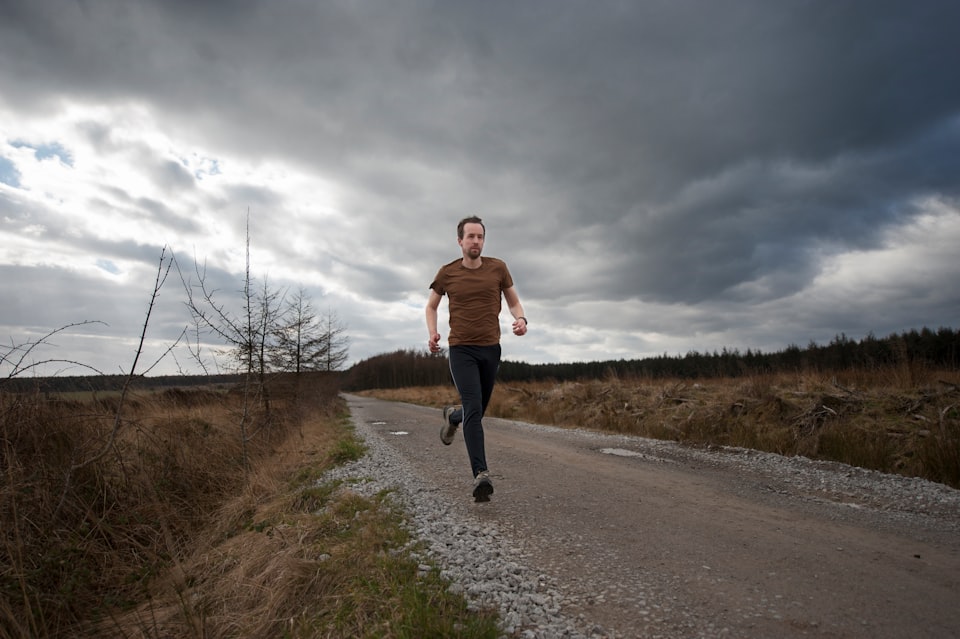Taking The Next Step In Your 10K Time

Imagine that you just finished your second 10K, sweat dripping with a feeling of accomplishment. You look down at your watch to see your time, only to be frustrated that you couldn’t beat your goal time. Occasionally, this can be a downside to running. We often can get competitive with ourselves, only to end up frustrated that we were unable to take the next step that we hoped.
Later on, you start to research ways to improve your 10K time. It gets overwhelming. There’s all these strange workouts that you see, and you don’t know where to begin. All this overwhelms leads to you defaulting back to your old training regimen and no progress is made.
Some would advocate for hiring a running coach. Most athletes are training to only compete against themselves, so I wouldn’t recommend that for most people. Here is a guide on taking the next step to hit that 10K PR that you’ve always hoped for.
Small Increases Can Yield Big Results
The general rule of thumb is to increase your weekly training mileage by 10% each week. The concept of this is a lot easier than doing it in practice.
The biggest downfall that I have with increasing my own weekly mileage is that I get impatient and want to jump up further than 10%. What ends up happening is that I get slightly burnt out and end up skipping a few runs, and my weekly mileage ends up being even LESS than what I intended.
Ramping up your weekly mileage will do a few things:
Gradual Adaptation: This is similar to the concept of progressive overload that is commonly used in weight lifting. Gradually increasing your miles will assure that your muscles, ligaments, and tendons recover properly and help prevent injury from occurring.
Prevents Overtraining: Jumping into a significantly higher mileage too quickly can lead to overtraining, which not only increases the risk of injury but can also lead to decreased performance, fatigue, and a weakened immune system. A 10% increase strikes a balance, pushing the body to adapt without overwhelming it.
Easier Mentally:If you gradually increase your mileage, it tends to be easier than jumping right into the deep end. If you ever had braces, then you would know that each time you went to the orthodontist, they would do one tiny crank to gradually move the tooth into place. This similar concept can apply to the mind and body.
Flexibility:Remember that you don’t have to increase your mileage 10% each week. Many runners will have down weeks, then pick up where they were at a few weeks prior.
The Hidden Key To Building Speed
Interval training can be a great addition to your training. Do interval training about 2x a week. You can either add it into your normal running routine or do it separately from your normal runs.
- Start with a warm-up run.
- Run at a sprinting pace for about 30–45 seconds, then do a light jog for 2 minutes. Repeat this about 8-10x.
- Cool down.
Interval training was a game changer for me. I’m convinced it’s the reason I was able to come in 3rd place during my first 5K.

Hit The Slopes
No, don’t go skiing. Run up hills. Look for the best hill that you can. Try to find one with at least a 15-degree slope and do some sprints up it. A good starting point is to do about 5–7 sprints up the hill. There’s no need to go all out and try to run a mile up hill.
Alternatively, if you do not have a hill to run up (if you’re a flatlander like me), opt for running stairs. I will often go to parking garages and run up the stairs or find any staircase.
Tempo Runs
Tempo runs, are a great test for how you can sustain a pace. It’s the true marker of how your training is going with your test.
On a tempo run, pick a pace that is challenging for you and try to maintain it for 20–30 minutes. Some parts of it may be hard, but it will be a great gauge of what pace you can maintain for that time.
Take It Easy
Long easy runs can be an enjoyable experience. Take a weekend day and block off 2–3 hours to explore the area you live in. Maybe you will discover something you didn’t know was there before. You will also build your miles up and get a lot of time on your feet.
Get Strong
Incorporate strength training twice a week. Place your focus on compound exercises and core training. There’s a reason why core and strength training had so much focus when I ran track.
The stronger muscles you have, the more resilient they will be to give you that extra spring in your step.
Don’t Neglect Recovery
I’ve been terrible about recovery in the past. Often, when I finish a run, I’ll head straight to the shower and go straight to relaxing.
Post run, focusing on relaxing your body as much as possible. Give your body a stretch and foam roll.
The rewards of recovery are not seen immediately, but they will reap benefits eventually.
Eat Right
Nutrition is a milestone of recovery and performing at your highest level. If you don’t have the energy to go out on a run because your diet is bad, then you’re impacting your training.
There’s a lot of complexities and confusion when it comes to nutrition. My basic advice would be to stick to eating real foods like produce and stay away from everything that is processed. Make as many meals at home as you can.
Be Consistent
When you choose a training plan, try to stick with it for at least 2 months. It can be tempting to try a training plan for a week and decide you don’t like it and change your training plan. This ultimately leads to feeling frustrated with the revolving door of training plans.
There is no perfect training plan for getting better at hitting your 10K PR. Look at where your weak points are and focus on those first. If you’re slow, focus on speed training. If you’re fast but struggled with the second half of your 10K, focus on building endurance.
Sign up for our email list now and get exclusive access to our ultimate 10K training checklist! Don't miss out on expert advice that could be the game-changer for your next race.
Click here to subscribe and claim your FREE 10K Training Checklist!




